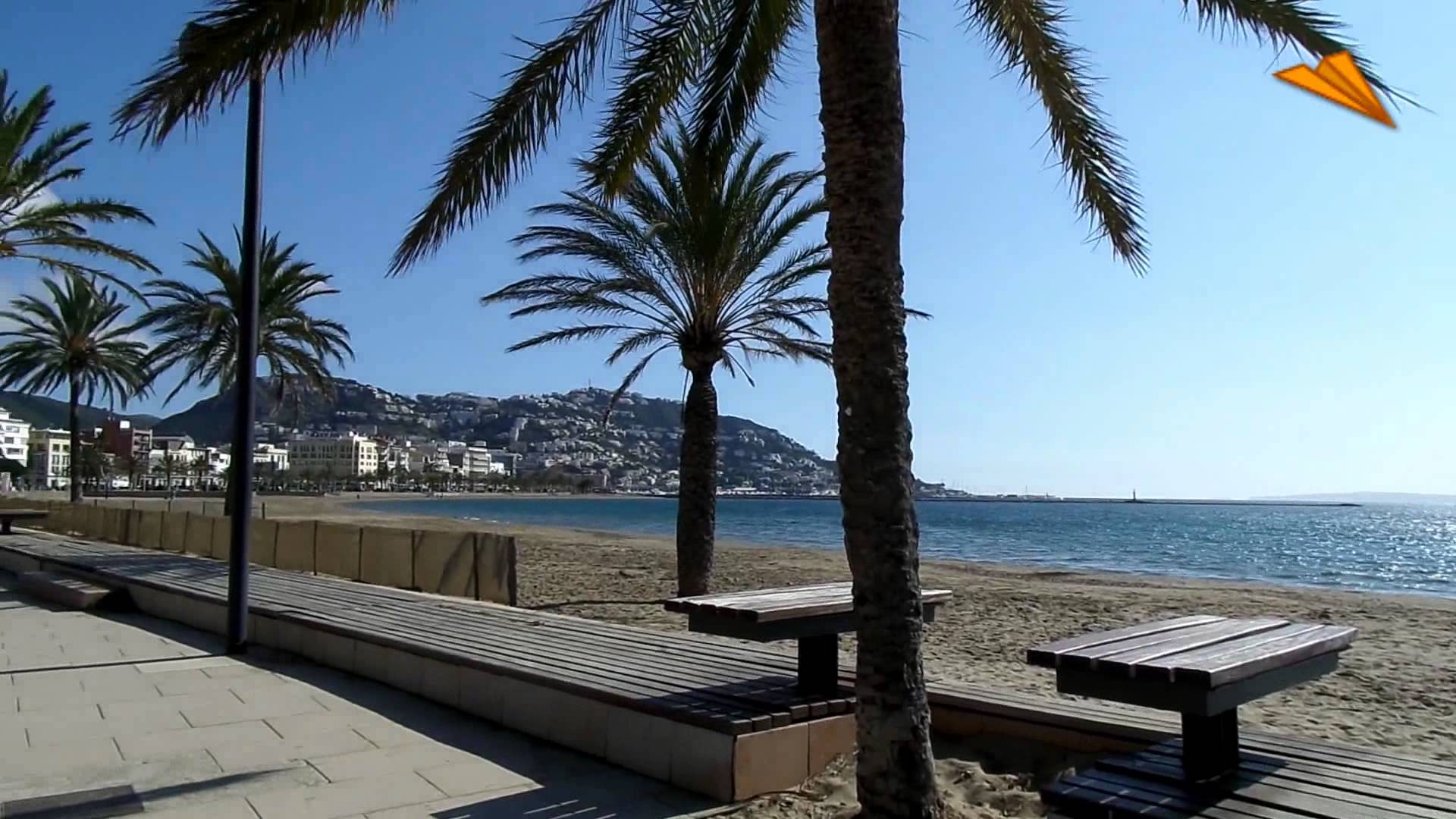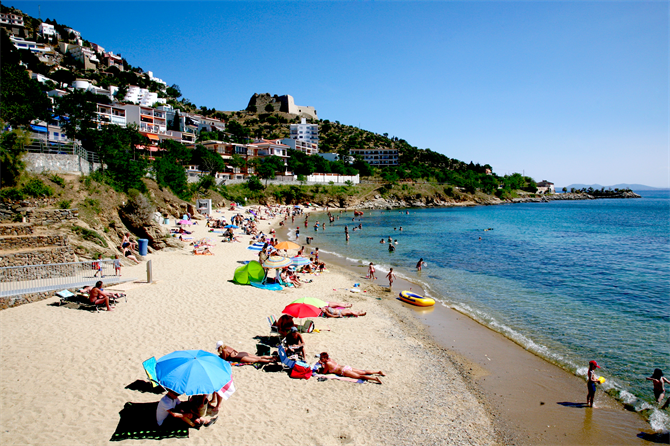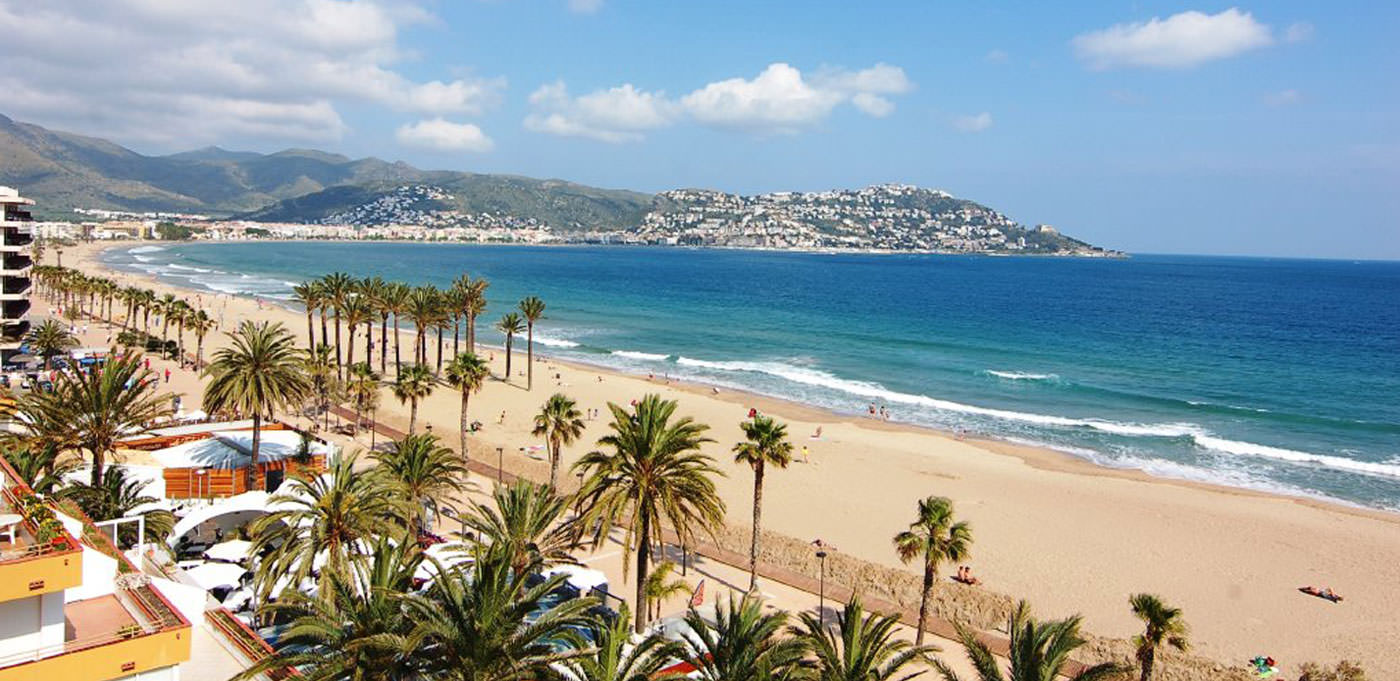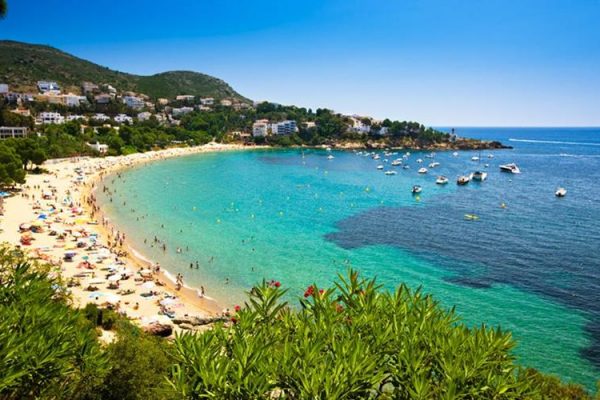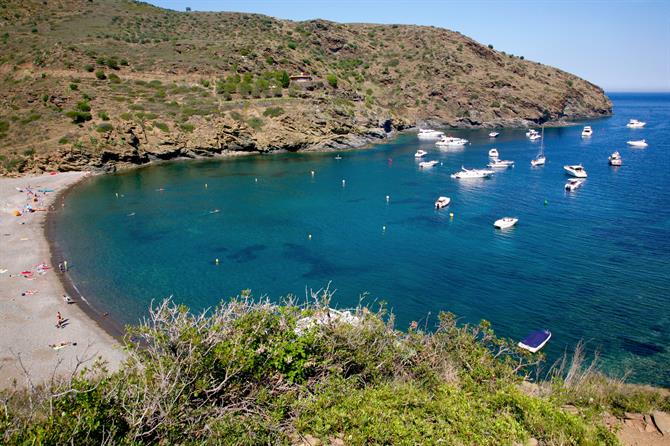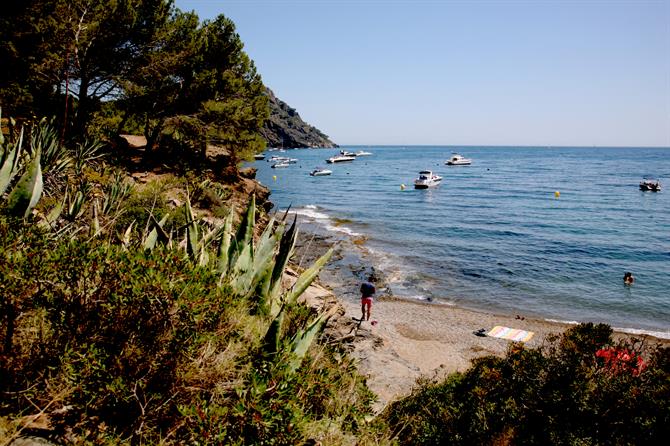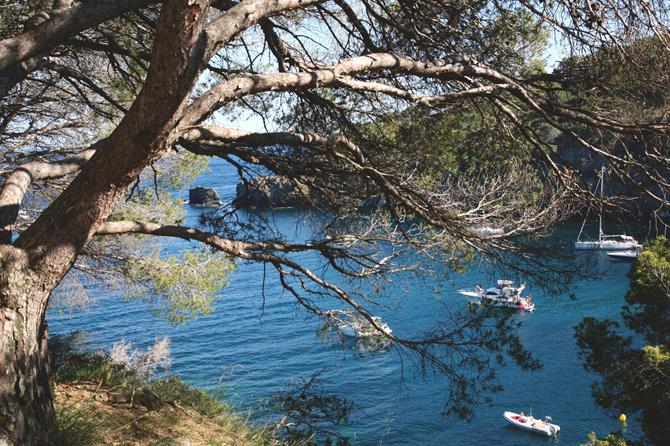BEACHES&COVES OF ROSES
1. Urban beaches: Roses Main Beach, La Punta, Santa Margarita and Palangres
The town of Roses is the perfect destination to enjoy sun and beach tourism in the Alto Ampurdián, on the Costa Brava. In the same center of Roses we find different beaches of fine sand and shallow water that also have all the services, so they are ideal if we travel with family.
The almost two kilometers of the beach of Roses are divided into three distinct sections: Nova beach, Rastrell beach and Salatar beach. It is one of the most visited beaches in Roses, as it is just a step away from the town center.
If we approach to the fishing port, we will find La Punta beach, 550 meters long and extending to the Ginjolers stream. Its proximity, fine sand and calm waters make it a rather crowded beach in summer.
The beach of Santa Margarida is one of the best known, since its 650 meters of fine sand and clear and calm waters are a claim for many tourists.
A little further away, but only 1km from the center of Roses, is the beach of Palangres, much smaller than the previous ones since its length does not exceed 150 meters. Even so, its picnic area with tables and benches at a water’s edge, makes it one of the favorite beaches in the most immediate environment of Roses. To enjoy these more or less urban beaches, there is nothing like finding a comfortable holiday villa on the beaches of Roses.
2. Canyelles Petites and Canyelles Grosses (Almadrava)
At 4 kilometers from Roses and without entering the Natural Park of the Cape of Creus we find two semi-urban beaches, with transparent waters and golden sand, perfect to enjoy the sun and nature without having to give up any kind of services. From Roses we can reach both easily by car or public transport.
The nearest beach to the town of Roses is Canyelles Petites, which stands out for the banks that have been located in its high seaside promenade and from which we will enjoy spectacular views of the surroundings. The beach services include showers, restaurants, lifeguard …
On one side of Canyelles Petites, you will find your older sister: the Almadrava cove or Canyelles Grosses, the last sand before entering the Cape of Creus. The waters of this beach are very shallow and there is almost no difference, so it is perfect to go with children. It has beach volleyball courts and even kayak rentals, a highly recommended option if you feel like discovering the paradisiacal coves of Cape Creus that we will talk about.
3. Cala Montjoi (Montjoi Cove)
At 7 kilometers from Roses and on the edge of the Natural Park of Cabo de Creus is this beach of 310 meters long, perfect for spending a day with your family. In its time, the Montjoi Creek was considered a true culinary temple, since in it was the famous restaurant El Bulli, of the renowned chef Ferrán Adrià. Although now closed, the Costa Brava continues to be a paradise for lovers of good cuisine, since all along the coastline we find numerous restaurants with Michelin star.
We can get to it directly by car, so its level of affluence is medium, without becoming too overwhelming. In addition, the water has a near unevenness, thanks to which the boats can get close enough to the shore. Its dark sand is intermixed with a multitude of flat stones of small size.
The ease of access, the beauty of the environment that protects it from the wind and its calm waters make the Cala Montjoi a perfect choice for those traveling with family. Above all, the best thing about this beach is that from it we can reach the most solitary and secluded coves of Cape Creus.
4. Cala Jóncols (Joncols Cove)
The Cape of Creus welcomes us with a small cove of great beauty called Cala Jóncols. It is a true oasis of transparent waters and a rocky seabed that we can discover renting all the necessary equipment for the diving or snorkel in the center of dive that is in the same beach.
The relative difficulty of access to the beach causes that the influx is limited and for this reason is one of the coves of the Costa Brava in which more calm and tranquility is breathed. This is a true movie scenario. However, Cala Jóncols has showers, toilets and hammock rentals, so we will feel like in paradise without having to give up any kind of services. You can reach Cala Jóncols by kayak, by boat or by an unpaved road from Cala Montjoi.
5. Cala del Canadell (Canadell Cove)
In the reserve of the Cape of Norfeu, in the heart of the Natural Park of the Cape of Creus, we will find a small virgin cove, solitary and of incredible beauty, paradise for the lovers of naturism.
Its difficulty of access, since it can not be accessed directly by car, and the fact that it does not offer any type of services makes it very little traveled. However, if we miss something, we can always get closer to the Jòncols cove, less than a kilometer away.
From the cove Canadell we recommend you to take a trip through the caves that hide in the cliffs of the coast of the Cape of Norfeu.
6. Cala Calitjàs (Calitjas Cove)
Desde la Cala Montjoi también podremos llegar hasta la Cala Calitjàs, una preciosa cala aislada en el Cabo de Creus, de 130 metros de longitud y desde la que disfrutaremos de una panorámica increíble del Cabo de Norfeu y sus playas.
Debido a su poca afluencia, es habitual encontrar nudistas en esta cala, pero también multitud de amantes del submarinismo y el esnórquel y es que en el extremo de rocas que separa la Cala Calitjàs y la Bahía de la cala Montjoi encontraremos los restos sumergidos del barco Phedon, hundido en 1934 después de sufrir una explosión.
Como el resto de calas del litoral del Cabo de Creus, la Cala Calitjàs está formada por piedras aplanadas y aguas transparentes, con un salto de profundidad bastante cercano a la orilla.
7. Cala Rostella (Rostella Cove)
La Cala Rostella welcomes you to the true Mediterranean paradise. This cove is the paradigm of dream beach: solitary, located in a virgin environment of green vegetation and with calm waters, of a beautiful turquoise blue color. The only drawback is the access, because, to get to it, we will have to approach by car and then descend on foot a stretch of about 15 minutes.
The Cala Rostella is 110 meters long and is composed mainly of small pebbles. Thanks to the abundant pine trees that surround it, the beach is sheltered from the wind. In addition, its crystalline waters and the beauty of its seabed attract a multitude of diving enthusiasts. A real oasis.

